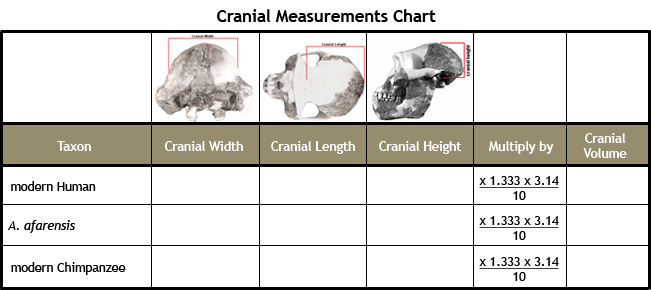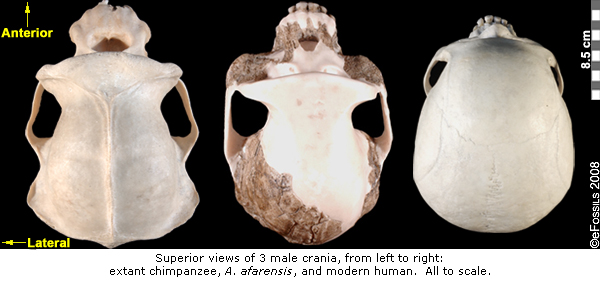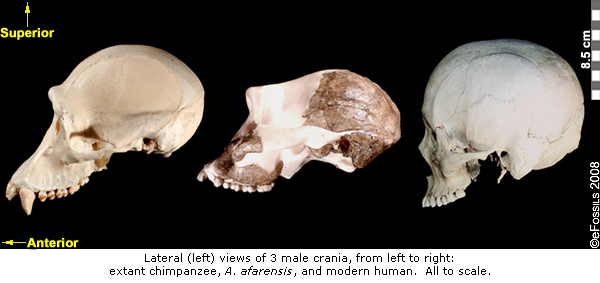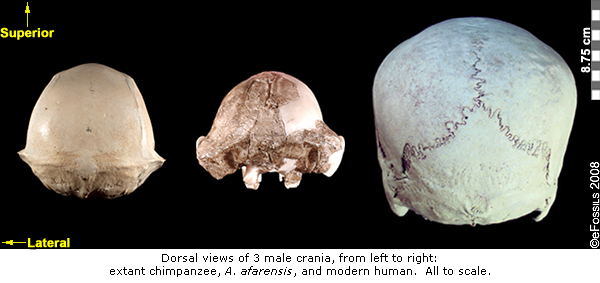Cranial Measurements: Determine whether the relative brain size of A. afarensis was more similar to modern humans or modern chimpanzees. (Remember that the primitive condition is expected to be more like that of a modern chimpanzee).
In this section of the activity, you will take 3 measurements: cranial width (the widest part of the skull), cranial length (the distance from the forehead just behind the eyebrows to the bac of the skull), and cranial height (the distance from the top of the cranium to just below the ear). Use the images in the chart as a guide.

-Was the brain size of A. afarensis more similar to modern humans or modern
chimpanzees?
Cranial Images



eFossils is a collaborative website in which users can explore important fossil localities and browse the fossil digital library. If you have any problems using this site or have any other questions, please feel free to contact us.
Funding for eFossils was provided by the Longhorn Innovation Fund for Technology (LIFT) Award from the Research & Educational Technology Committee (R&E) of the IT governance structure at The University of Texas at Austin.
